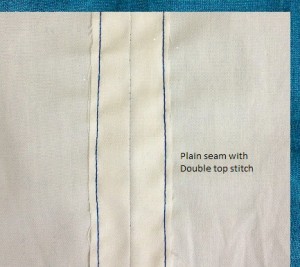
Dress Pants
Image: glamour.com
For eight years, Eva Lea Klein worked as a tailor at a Banana Republic retail store in Boca Raton, Florida. In this position, Eva Lea Klein altered garments for customers and created new pieces from patterns.
Many professional women wear dress pants to work, but unfortunately, many women don’t wear properly fitting pants. You can tell when dress pants are a poor fit by checking where the waistband and crotch rest.
Ideally, the waistline should rest around the belly button and be loose enough to comfortably fit in two fingers. The crotch should not hang too low or rise too high.
When you pinch the fabric at the thighs, you should be able to get about one inch of extra fabric between your fingers. This ensures the pants are neither too loose nor too tight.
The length of pants is also important. Wide-legged trousers should have hems about a fourth of an inch off the ground since they are designed to skim the floor. However, other styles should have hems about an inch from the ground.


